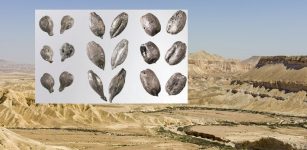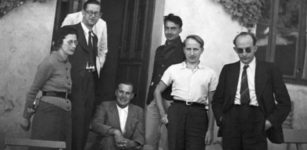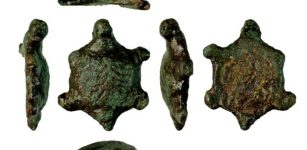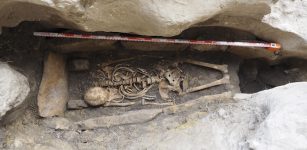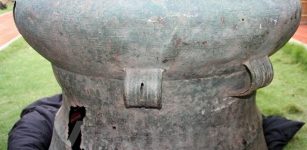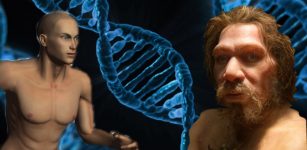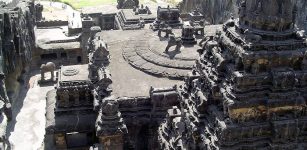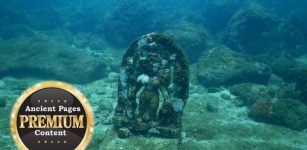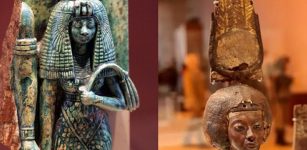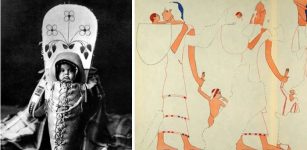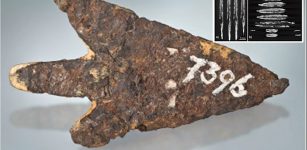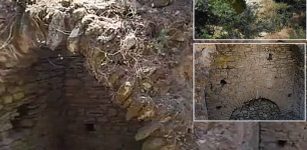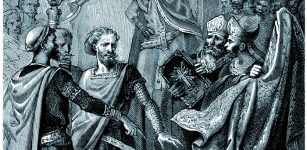Micro-CT Scans Revealed: It Wasn’t Egyptians’ Falcon-Headed Deity But Malformed Human Baby
AncientPages.com - There was no reason to think the mummified remains were anything but a bird.
It was listed in Maidstone Museum’s inventory as EA 493 Mummified Hawk, Ptolemaic Period and stored with the animal mummies. A hawk face is gilt-painted on the raptor-sized funerary casement. Hieroglyphics make reference to Horus, the Egyptians’ falcon-headed deity.
Only now, 2,100 years since it was preserved and wrapped in linen to ensure its safe passage to the afterlife, micro-CT scans have figuratively peeled away its mysteries to reveal a severely malformed, pre-term human baby: stillborn and anencephalic.
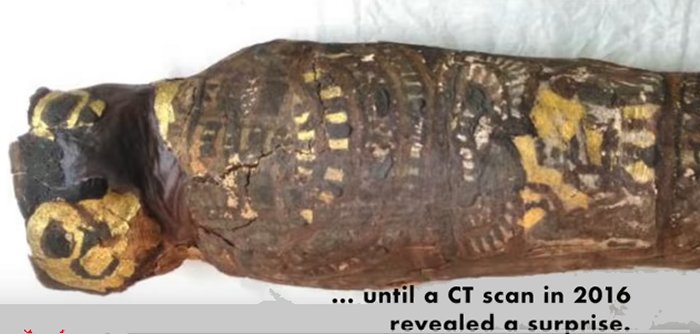
This was a preserved, pre-term male with well-proportioned arms and legs and well-formed tiny fingers and toes. He was just weeks away from what, under ordinary circumstances, might have been an ordinary birth. Credit: Maidstone Museum UK/Nikon Metrology UK
An international research team led by Western bioarchaeologist Andrew Nelson has determined the mummy to be a human male, stillborn at 23-28 weeks of gestation, with major spinal abnormalities and a rare condition in which the brain and skull fail to develop properly.
“On the basis of the highest resolution scan of a fetal mummy ever made, we’ve been able to determine this individual was severely anencephalic,” said Nelson, an Anthropology professor who recently presented the team’s findings during the Extraordinary World Congress on Mummy Studies in the Canary Islands. “It would have been a stillbirth, it would not have lived through birth.”
His multi-disciplinary team of more than a dozen specialists has brought unprecedented scientific scrutiny and anatomic detail to the anonymous little Egyptian – misidentified until officials at Maidstone Museum in the UK decided to CT-scan their resident female mummy in 2016 and, incidentally, to take a closer look at EA 493 and other animal mummies at the same time.
“It was very difficult to see what was going on from these clinical CT scans, because it’s a very small object and the resolution is not that great,” Nelson said. “What we needed were better-resolution scans and more experts.”
Nelson worked with the Maidstone Museum and Nikon Metrology, which conducted a micro-CT scan – an extremely high resolution scan that didn’t entail damaging the mummy in any way – and Nelson assembled and led a team to examine and interpret those images.
The scan reveals what must have been a heart-wrenching story, even two millennia ago: This was a preserved, pre-term male with well-proportioned arms and legs and well-formed tiny fingers and toes. He was just weeks away from what, under ordinary circumstances, might have been an ordinary birth.

Photos and micro-CT scans of EA 493 Mummified Hawk, Ptolemaic Period, determined by researchers led by Western bioarchaeologist Andrew Nelson to actually be the mummy of a human baby. Maidstone Museum UK/Nikon Metrology UK
But Nelson quickly realized ‘ordinary’ was impossible in this case.
“When I first looked, I didn’t know what I was looking at. I thought, ‘There’s something strange,’” he said of the micro-CT imagery. “The whole top part of his skull isn’t formed. The arches of the vertebrae of his spine haven’t closed. His earbones are at the back of his head.”
Scans show a cleft palate and cleft lip. More critically, beneath the thin layer of skin on the odd-shaped scalp there is a complete absence of bones that form the roof and sides of the head. “What’s missing is the broad arch of the vault of the skull and that is where the brain would be. In this individual, this part of the vault never formed and there probably was no real brain formed.”
In short, although somehow having reached a fetal age when a healthier baby might have been viable in today’s neonatal intensive care unit, this little one’s many malformities gave it no chance. “It would have been a tragic moment for the family to lose their infant and to give birth to a very strange-looking fetus, not a normal-looking fetus at all,” he said.
“The family’s response was to mummify this individual, which was very rare. In ancient Egypt, fetuses tended to be buried in pots, below house floors, in various ways. There are only about six or eight known to have been mummified. So this was a very special individual.”
The discovery provides clues to the maternal diet: anencephaly can be caused by a lack of folic acid, ordinarily found in dark green vegetables such as broccoli and spinach.
Of eight known mummified Egyptian fetuses, two are anencephalic (the other was described in 1826), which may indicate they were held in higher regard.
That hypothesis would support social histories suggesting ancient Egyptians believed fetuses held some talismanic power, whether to be used for protective good to those who possessed one or to be used to attract evil to another person.
But the analysis also opens more questions: Why was the cartonnage designed to look like a bird? Why didn’t curators through the years notice the ‘feet’ end looks more like human sandals than bird claws? Where did it originate, and what objects or relics were its companions in death? Was mummification an act of homage, reverence or its perceived magical powers?
Nelson hopes these scans can at least form the basis for further studies, by an even larger group of scholars and researchers.
A team of more than a dozen researchers – specialists in Egyptology, radiology, anatomy, neonatology and urology – helped create this profile as it is known so far.
The researchers come from London, Ont., to England to France to Cairo: at Maidstone Museum, University of Cairo, Université de Bordeaux, Royal Ontario Museum, London Health Sciences Centre and St. Joseph’s Health Care London, Schulich School of Medicine & Dentistry and Western.
Those collaborations have been crucial to reconstructing the mummy, and such interdisciplinary work is essential in creating a textured analysis and interpretation, Nelson said.
“It’s been a great experience reaching out and working with people all over the world and all over the campus.”
AncientPages.com

